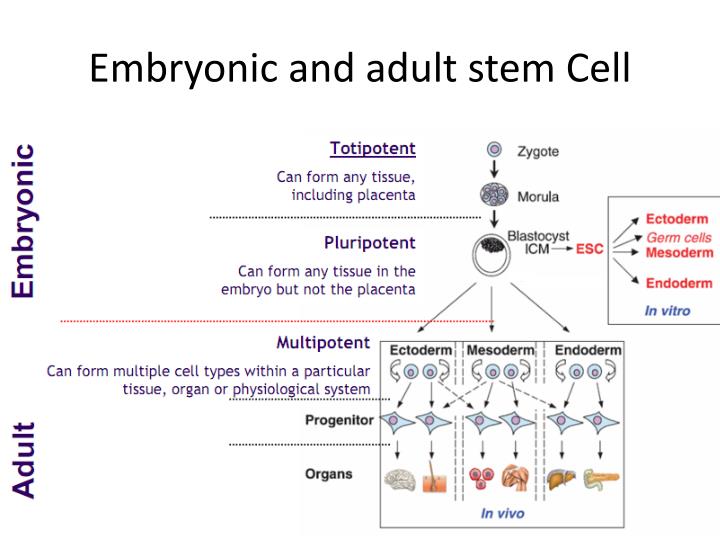

d, Detailed list of compound combinations.
ARE EMBRYONIC STEM CELLS TOTIPOTENT RAR
c, Bar graph showing the percentage of MERVL-tdTomato + cells generated by treatment with indicated RAR agonists. b, Immunostaining of MERVL-Gag in mouse ES cells with MERVL-tdTomato & OCT4-GFP dual-reporter mouse ES cells under basal 2i/LIF medium. Methods 14, 959–962 (2017).Ī, Schematic diagram of MERVL-tdTomato reporter. An improved ATAC-seq protocol reduces background and enables interrogation of frozen tissues. MotifMap-integrative genome-wide maps of regulatory motif sites for model species. MotifMap: a human genome-wide map of candidate regulatory motif sites. Induction and maintenance of mouse totipotent stem cells by a defined chemical cocktail. Nuclear factor-kappa-B-inhibitor alpha ( NFKBIA) is a developmental marker of NF-κB/p65 activation during in vitro oocyte maturation and early embryogenesis. Nuclear translocation of nuclear factor kappa B in early 1-cell mouse embryos. Inhibiting DNA methylation causes an interferon response in cancer via dsRNA including endogenous retroviruses. Endogenous retroviruses promote homeostatic and inflammatory responses to the microbiota. Metabolic remodelling during early mouse embryo development. A unique regulatory phase of DNA methylation in the early mammalian embryo. The landscape of accessible chromatin in mammalian preimplantation embryos. Chemical-induced chromatin remodeling reprograms mouse ESCs to totipotent-like stem cells. A novel acrosomal protein, IQCF1, involved in sperm capacitation and the acrosome reaction. Gene expression profiles in mouse cumulus cells derived from in vitro matured oocytes with and without blastocyst formation. Completion of meiosis I of preovulatory oocytes and facilitation of preimplantation embryo development by glial cell line-derived neurotrophic factor. Dysfunctional spermatogenesis in transgenic mice overexpressing bHLH-Zip transcription factor, Spz1. Display of different modes of transcription by the promoters of an early embryonic gene, Zfp352, in preimplantation embryos and in somatic cells. TDPOZ, a family of bipartite animal and plant proteins that contain the TRAF (TD) and POZ/BTB domains. Retinoic acid signaling is critical during the totipotency window in early mammalian development. Mouse totipotent stem cells captured and maintained through spliceosomal repression. Establishment of mouse expanded potential stem cells. Derivation of pluripotent stem cells with in vivo embryonic and extraembryonic potency. Conserved roles of mouse DUX and human DUX4 in activating cleavage-stage genes and MERVL/HERVL retrotransposons. DUX-family transcription factors regulate zygotic genome activation in placental mammals. From pluripotency to totipotency: an experimentalist’s guide to cellular potency. A cell in hand is worth two in the embryo: recent advances in 2-cell like cell reprogramming. Embryonic stem cell potency fluctuates with endogenous retrovirus activity. Evaluating totipotency using criteria of increasing stringency. From teratocarcinomas to embryonic stem cells and beyond: a history of embryonic stem cell research. Experiments on the duvelopment of isolated blastomeres of mouse egg. Our chemical approach to totipotent stem cell induction and maintenance provides a defined in vitro system for manipulating and developing understanding of the totipotent state and the development of multicellular organisms from non-germline cells. Furthermore, following injection into 8-cell embryos, ciTotiSCs contributed to both embryonic and extraembryonic lineages with high efficiency. In addition, ciTotiSCs exhibited bidirectional developmental potentials and were able to produce both embryonic and extraembryonic cells in vitro and in teratoma. The resulting chemically induced totipotent stem cells (ciTotiSCs), resembled mouse totipotent 2-cell embryo cells at the transcriptome, epigenome and metabolome levels. Here we demonstrate the induction and long-term maintenance of TotiSCs from mouse pluripotent stem cells using a combination of three small molecules: the retinoic acid analogue TTNPB, 1-azakenpaullone and the kinase blocker WS6. However, it remains unknown whether and how totipotent stem cells can be established in vitro in the absence of germline cells. In mice, only the zygotes and blastomeres from 2-cell embryos are authentic totipotent stem cells (TotiSCs) capable of producing all the differentiated cells in both embryonic and extraembryonic tissues and forming an entire organism 1.


 0 kommentar(er)
0 kommentar(er)
